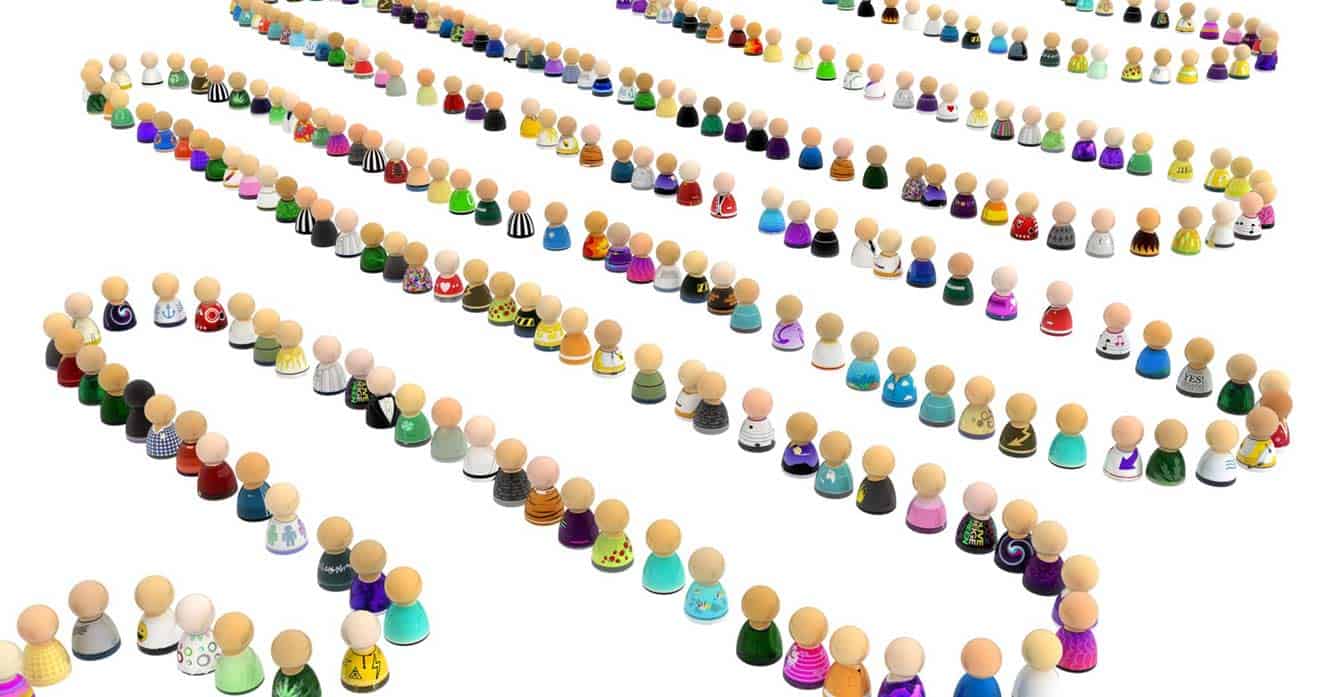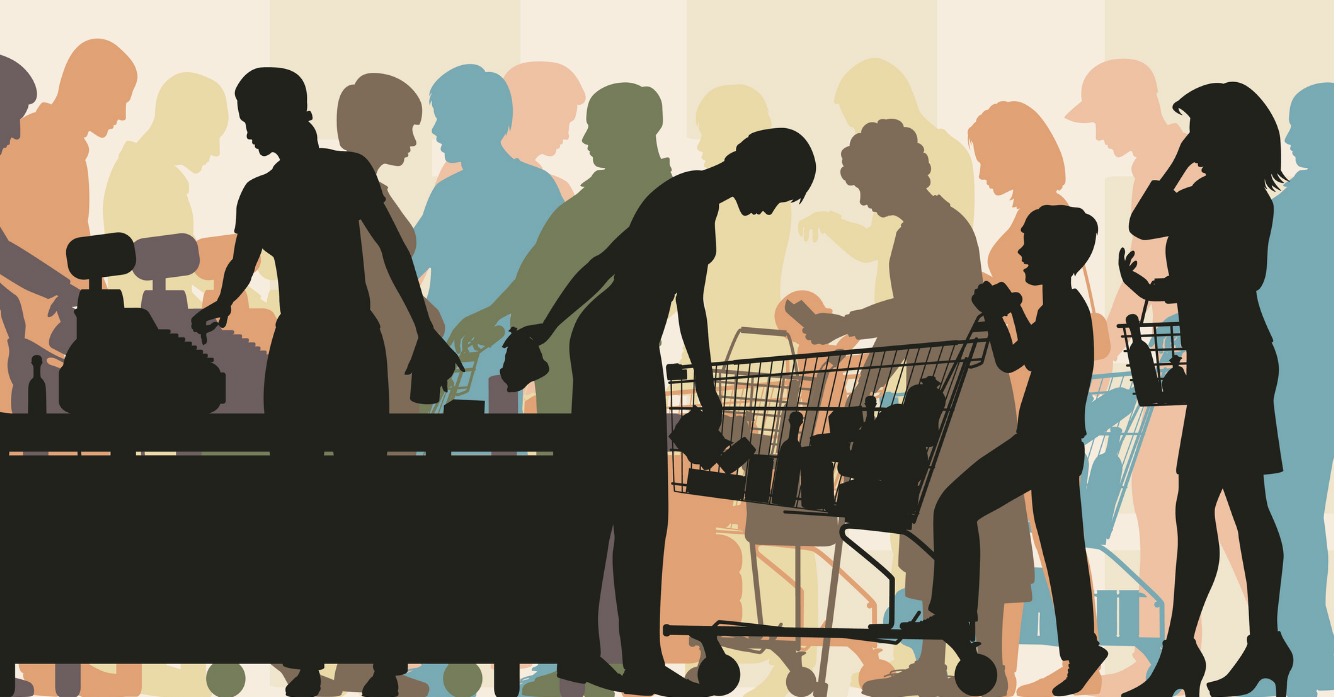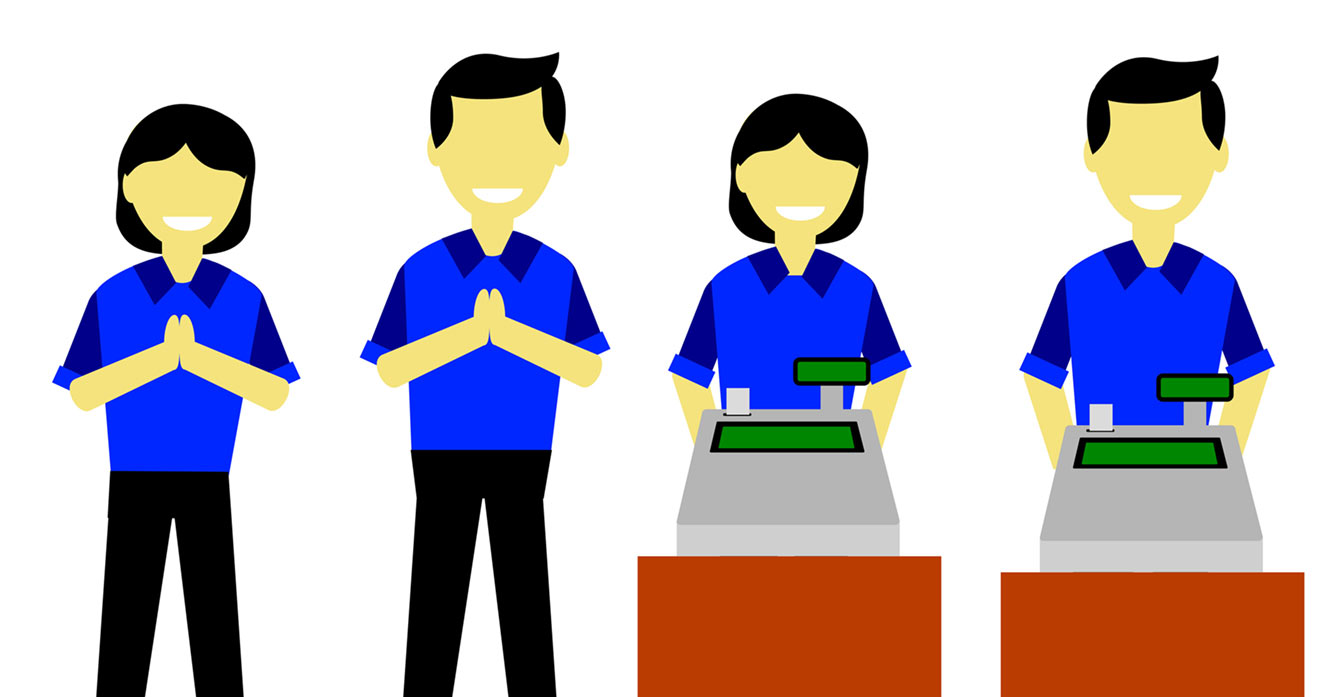Retail consumers are stressed out by the checkout queue.1 This comes as no surprise. Like waiting in traffic, standing in line is an everyday issue that few people become accustomed to. On the operator side, queueing is a constant challenge. Why? It is more complex than just opening an additional checkout lane when lines exceed a threshold. The front end is a high-impact department, with small operational changes creating financial ripple effects. Register areas often receive significant attention from corporate leaders in terms of customer satisfaction and marketing campaigns.
However, this blog post is not about the front end. By taking a closer look at retail stores, queuing occurs in multiple service departments. In grocery stores, it occurs at production counters. In apparel stores, it happens at the fitting room. In electronic retailers, it transpires at service desks; these are only a few examples. Although many retailers emphasize the front end queue for continuing improvement, there is more opportunity at stake. Queuing in departments apart from the front end may be more impactful or detrimental to a retailer’s overall profitability than most realize.
The phenomenon behind customer perceptions on departmental waiting is called crowding. Today’s post will review captivating research around crowding as well as outline examples regarding the effect on key performance indicators, or KPIs, in retail. To begin, crowding is a psychological concept describing consumer sensitivities to personal space and time within a purchasing environment.1 Studies showed that perceived crowding influences customer behavior, dependent on customer mood, expectation, tolerance and culture.1 In retail locations, larger crowds and tighter spaces reduced consumer satisfaction, but there are mitigating factors.
One factor is customer control.1 Customers who know how long the expected wait is in stores perceive having more control over their time. Another modifying factor is store atmospheric variables, like music, temperature and stimulation levels, which can reduce customer anxiety.1,2 A third and powerful mitigating variable is employee engagement.1 Anyone driving through Chick Fil A at lunch has experienced this; the outrageous line seems bearable because associates using handheld devices take orders in the parking lot. A final factor is, if customers perceive their purchases to be higher in value, they will wait longer.1
Experts note that queuing is a function of crowding, meaning the two go hand-in-hand.1 Thus, one can illustrate how waiting in service department queues can affect customer-facing KPIs that ultimately roll into retail profitability. These KPIs can be seen below:
- Direct Sales: When crowding is not justifiable in a customer’s mind, he can abandon purchases. Think about the father who leaves the deli counter because he cannot get serviced in time. He decides the opportunity cost to wait is greater than asking his family to eat out another week.
- Customer Satisfaction: Customer loyalty can be impacted by poor perceptions of crowding and waiting within the retail store.1 Operators who do not meet customer expectations, or who do not counteract the effects of queuing, can expect disillusioned customers to move on to the next competitor.
- Employee Satisfaction: Long lines in retail departments are stressful to employees, too. Not only do they feel rushed, but they must deal with emotionally charged customers. This can lead to employee turnover, which is costly in many ways (i.e., training, understaffing, etc.)3
The only way to truly understand crowding and queuing is to study them. Queuing studies and simulations applied across varying daily and weekly time periods are incredibly fruitful. It is important to not only understand if you have crowding or queuing issues, but also understand why you have those constraints. Common struggles from my time in retail were: 1) a shortage of associates; 2) a lack of employee training; 3) less-than-motivated employees; 4) a lack of efficient work spaces; or 5) inadequate forecasting and schedule planning.
In ending, a thorough understanding of crowding and its causes can pay dividends. Once one understands the root causes creating crowding in a business, appropriate solutions can be developed to meet those needs. Adding labor without a strategic plan solves little. Taking the time to do a true assessment of crowding, queuing and their contributing factors can make a real impact on profitability.
References
- Mehta, R. (2013). Understanding perceived retail crowding: A critical review and research agenda. Journal of Retailing and Consumer Services, 20(6), 642-649. doi: 10.1016/j.jretconser.2013.06.002
- Sherred, K. (2019, January 15). Survey: 9 in 10 shoppers revisit stores that ignite the senses. GroceryDive.com. Retrieved from https://www.grocerydive.com/news/survey-9-in-10-shoppers-revisit-stores-that-ignite-the-senses/545938/
- Ton, Z. (2012). Why “good jobs” are good for retailers. Harvard Business Review. Retrieved from https://hbr.org/2012/01/why-good-jobs-are-good-for-retailers



